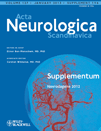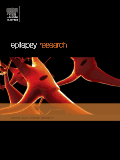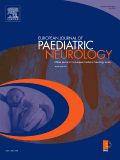
Epilepsia Open
Scope & Guideline
Bridging gaps in epilepsy knowledge for global impact.
Introduction
Aims and Scopes
- Clinical Research in Epilepsy:
The journal publishes studies focusing on the clinical aspects of epilepsy, including treatment efficacy, safety profiles of anti-seizure medications, and surgical interventions. This includes observational studies, clinical trials, and systematic reviews that provide insights into patient management. - Genetic and Molecular Studies:
Research that investigates the genetic underpinnings of epilepsy, including the identification of pathogenic variants and their implications for treatment. This area emphasizes the integration of genetics into clinical practice, such as genetic testing and personalized medicine approaches. - Neurophysiology and Neuroimaging:
The journal features studies employing advanced neurophysiological techniques like EEG, SPECT, and MRI to better understand the mechanisms of epilepsy. This includes research on seizure prediction, biomarkers, and the impact of neuroimaging on surgical outcomes. - Psychosocial Aspects of Epilepsy:
Articles addressing the psychosocial impact of epilepsy on patients and their families, including stigma, mental health comorbidities, and quality of life assessments. This aspect highlights the importance of holistic care in epilepsy management. - Innovative Therapies and Interventions:
Research on novel therapeutic approaches, including digital health interventions, dietary therapies (like the ketogenic diet), and neuromodulation techniques such as vagus nerve stimulation. This includes both clinical efficacy studies and pilot trials.
Trending and Emerging
- Digital Health and Telemedicine:
With the rise of digital health technologies, there is an increasing focus on telemedicine and digital interventions for epilepsy management. Studies exploring the effectiveness of mobile apps and online platforms for patient engagement and self-management are becoming more prevalent. - Precision Medicine and Genetic Testing:
The integration of genetic testing into clinical practice for epilepsy is gaining momentum, with more studies focusing on personalized treatment approaches based on individual genetic profiles. This trend is significant as it aligns with the broader movement towards precision medicine. - Long-term Outcomes and Quality of Life Assessments:
There is a growing emphasis on long-term outcomes and quality of life in epilepsy patients. Research is increasingly looking at how treatment impacts not just seizure control but also overall well-being and daily functioning. - Comorbidities in Epilepsy:
Research exploring the relationship between epilepsy and various comorbid conditions, such as psychiatric disorders, cognitive impairment, and metabolic issues, is on the rise. This reflects a holistic approach to understanding the complexities of epilepsy. - Novel Treatment Modalities:
Emerging therapies, including cannabinoids, neuromodulation techniques, and dietary interventions, are gaining attention. Research is focusing on their efficacy and safety, indicating a shift towards exploring alternative treatment options beyond traditional medications.
Declining or Waning
- Historical Perspectives on Epilepsy:
There has been a noticeable reduction in papers focusing on the historical context and evolution of epilepsy as a medical condition, indicating a shift towards more contemporary clinical and scientific studies. - Pharmacokinetics of Older Antiepileptic Drugs:
Research centered on the pharmacokinetics and safety profiles of older anti-seizure medications is less frequent, as newer therapies and their comparative effectiveness take precedence in recent studies. - Epidemiological Studies in Low-Income Regions:
While still relevant, the volume of epidemiological studies focusing on epilepsy in low-resource settings has decreased, suggesting a potential shift towards more localized or specific clinical studies in developed regions. - Basic Science Research in Animal Models:
There is a decline in the publication of studies focusing on basic science research using animal models. This may indicate a trend towards translational research that connects laboratory findings more directly with clinical applications.
Similar Journals

ACTA NEUROLOGICA SCANDINAVICA
Exploring the Frontiers of NeuroscienceACTA NEUROLOGICA SCANDINAVICA is a prestigious journal published by Wiley that has significantly contributed to the field of neurology and neuroscience since its inception in 1961. With a broad scope encompassing clinical and experimental research, this journal is esteemed for its rigorous peer-review process and high-quality publications. Located in the United Kingdom, it is recognized in the 2023 category quartiles as Q1 in Medicine (miscellaneous) and Q2 in both Neurology and Clinical Neurology, indicating its strong influence and relevance within the medical community. With an H-index demonstrating consistent citation impact, ACTA NEUROLOGICA SCANDINAVICA holds a Scopus rank of #86 out of 400 in Clinical Neurology, reflecting its contribution to advancing current knowledge and practice. Researchers, professionals, and students alike will find in this journal a valuable resource for the latest findings, discussions, and developments in understanding neurological disorders and treatments, furthering educational and clinical endeavors alike.

Annals of Indian Academy of Neurology
Empowering Minds, Transforming NeurologyAnnals of Indian Academy of Neurology is a premier open access journal dedicated to advancing the field of Neurology, serving as a vital resource for researchers, healthcare professionals, and students since its inception in 2006. Published by the esteemed Wolters Kluwer Medknow Publications, this journal has established itself within the academic community, boasting a Q3 quartile ranking in clinical neurology according to the 2023 category quartiles and a Scopus rank placing it in the 35th percentile among 400 comparable journals. With a focus on clinical advancements and research innovations in neurology, the journal aims to disseminate high-quality and impactful studies that address the complex challenges faced in the neurological landscape, particularly within the Indian context. The open access model ensures that the latest research is readily accessible to a global audience, thereby promoting collaboration and knowledge sharing within the neurosciences.

Cancer Management and Research
Transforming cancer care with groundbreaking insights.Cancer Management and Research, published by DOVE MEDICAL PRESS LTD, is a leading open-access journal dedicated to advancing the field of oncology. Since its inception in 2009, this journal has established itself as a vital resource for researchers, clinicians, and healthcare professionals focused on cancer treatment and management. With its robust impact factor and impressive Scopus ranking in the 77th percentile of oncology medicine, it provides a prominent platform for sharing high-quality research. The journal covers a wide range of topics within cancer management, including innovative therapeutic strategies, clinical trials, patient care, and health policy, ensuring a comprehensive approach to current challenges in the field. Operating from New Zealand, it invites contributions that can shape the future of oncology and improve patient outcomes globally, making it an essential addition to the libraries of those engaged in cancer research and practice.

EPILEPSY RESEARCH
Advancing knowledge in epilepsy and neurology.EPILEPSY RESEARCH is a distinguished journal published by Elsevier, focusing on the dynamic field of neurology with a specific emphasis on epilepsy and related neurological disorders. Since its inception in 1987, the journal has become a vital platform for disseminating cutting-edge research, contributing significantly to the understanding of epileptic conditions and their clinical implications. With an impactful presence in the academic community, EPILEPSY RESEARCH currently holds a 2023 Q2 ranking in both the Neurology and Clinical Neurology categories, reflecting its commitment to high-quality, peer-reviewed content. The journal is indexed in SCOPUS, Ranking #173/400 in Clinical Neurology and #91/192 in Neuroscience, ensuring widespread visibility and academic engagement. Although not an open access publication, it provides critical insights, findings, and reviews that are essential for researchers, clinicians, and students alike, fostering advancements in epilepsy research and treatment. For any inquiries, the journal is based at Radarweg 29, 1043 NX Amsterdam, Netherlands.

EUROPEAN JOURNAL OF PAEDIATRIC NEUROLOGY
Uniting knowledge and innovation in pediatric neurology.European Journal of Paediatric Neurology, published by Elsevier Science Ltd, is a premier academic journal dedicated to advancing the field of paediatric neurology. With its ISSN 1090-3798 and E-ISSN 1532-2130, this journal serves as a vital resource for researchers, clinicians, and students alike, focusing on the latest findings and innovative treatments in paediatric neurological disorders. The journal has established itself as a leading publication in its field, achieving a Q1 classification in Pediatrics, Perinatology and Child Health, and holding a reputable Q2 status in Clinical Neurology as of 2023. Positioned within the top 88th percentile in Pediatrics and the 76th percentile in Clinical Neurology according to Scopus ranks, it publishes rigorous peer-reviewed articles that contribute significantly to clinical practice and research. Although not open access, the journal provides vital insights into the complexities of neurological conditions affecting the pediatric population, making it an essential tool for scholars and professionals striving to improve child health outcomes. With a publication trajectory spanning from 1997 to 2024, it continues to be at the forefront of paediatric neurological research, inspiring innovation and collaboration in the scientific community.

Cochrane Database of Systematic Reviews
Navigating the Landscape of Systematic ReviewsThe Cochrane Database of Systematic Reviews is a premier journal published by WILEY, focusing on the critical appraisal and synthesis of high-quality research in health care. With its dedication to evidence-based practice, this journal serves as a cornerstone for researchers, healthcare professionals, and students alike, offering pivotal insights through rigorous systematic reviews. Although it is not an open-access publication, its influence in guiding clinical decision-making and policy formulation is profound, underscored by its contributions to the advancement of healthcare knowledge. Based in the United States at 111 River St, Hoboken, NJ, the Cochrane Database has established itself as essential reading for those seeking to stay at the forefront of systematic reviews and meta-analyses in the medical field, ensuring that users are well-equipped with the evidence necessary for informed practice.

Movement Disorders Clinical Practice
Navigating the complexities of movement disorders together.Movement Disorders Clinical Practice, published by WILEY, is an essential peer-reviewed journal dedicated to advancing the understanding and treatment of movement disorders from a clinical perspective. With an ISSN of 2330-1619, this journal serves as a vital resource for researchers, clinicians, and students engaged in neurology and clinical neuroscience. Since its inception in 2014, the journal has established itself within the medical community, currently positioned in the Q2 category for both Neurology and Neurology (Clinical), reflecting its influence and reputation. Although it does not offer open access, the journal is integral for disseminating high-quality research and clinical insights, thereby contributing significantly to improved patient care and outcomes in the field of movement disorders. Based in Hoboken, NJ, it continues to attract contributions from leading experts and aims to foster a deeper understanding and dialogue surrounding contemporary challenges and advancements in movement disorder treatment.

Therapeutic Advances in Neurological Disorders
Unlocking innovative therapies for neurological health.Therapeutic Advances in Neurological Disorders, published by SAGE Publications Ltd, is a leading open access journal dedicated to the advancement of knowledge in the field of neurology. Since its inception in 2008, this journal has established itself as a vital resource for researchers, healthcare professionals, and students, offering a platform for the dissemination of high-quality research that improves the understanding and treatment of neurological disorders. With a commendable impact factor and ranked Q1 in multiple categories, including Neurology and Pharmacology for 2023, it exemplifies excellence in scholarly contributions. The journal's Scope encompasses a wide array of topics, providing insights that are pivotal for clinical practice and pharmacological development. Additionally, with its commitment to open access since 2017, Therapeutic Advances in Neurological Disorders ensures that its research reaches a global audience, fostering collaboration and innovation in neurological science.

Clinical Obesity
Advancing the Science of Obesity ManagementClinical Obesity, published by WILEY, is a leading journal in the field of Endocrinology, Diabetes, and Metabolism that strives to advance the understanding of obesity-related health issues. With an ISSN of 1758-8103 and an E-ISSN of 1758-8111, this journal provides a platform for cutting-edge research and findings pertaining to the epidemiology, pathophysiology, prevention, and treatment of obesity. Recognized with a Q2 ranking in both Endocrinology, Diabetes and Metabolism and Medicine (miscellaneous) categories, and boasting a Scopus rank of #90 out of 244, Clinical Obesity encompasses innovative studies that influence clinical practice and public health policies. While this journal operates under a subscription model, its discipline-specific contributions are invaluable for researchers, healthcare professionals, and students keen on addressing the complexities of obesity in a comprehensive manner.

Zeitschrift fur Epileptologie
Empowering clinicians with the latest findings in epilepsy.Zeitschrift fur Epileptologie is a vital resource in the field of neurology and pediatric healthcare, published by Springer Heidelberg. With its ISSN 1617-6782 and E-ISSN 1610-0646, the journal focuses on the latest research and clinical practices pertaining to epilepsy, catering to an audience that includes researchers, clinicians, and students. Although it currently holds a Q4 ranking in both Neurology (clinical) and Pediatrics categories, the journal's commitment to disseminating key findings and enhancing understanding in these fields positions it as an important contributor to ongoing discussions around epilepsy management and child health. The journal has published continuously from 2005 to 2022, offering both traditional and open-access viewing options that increase its accessibility to a global audience. By maintaining an emphasis on high-quality research, Zeitschrift fur Epileptologie strives to improve patient care and embrace innovations in treatment methodologies.